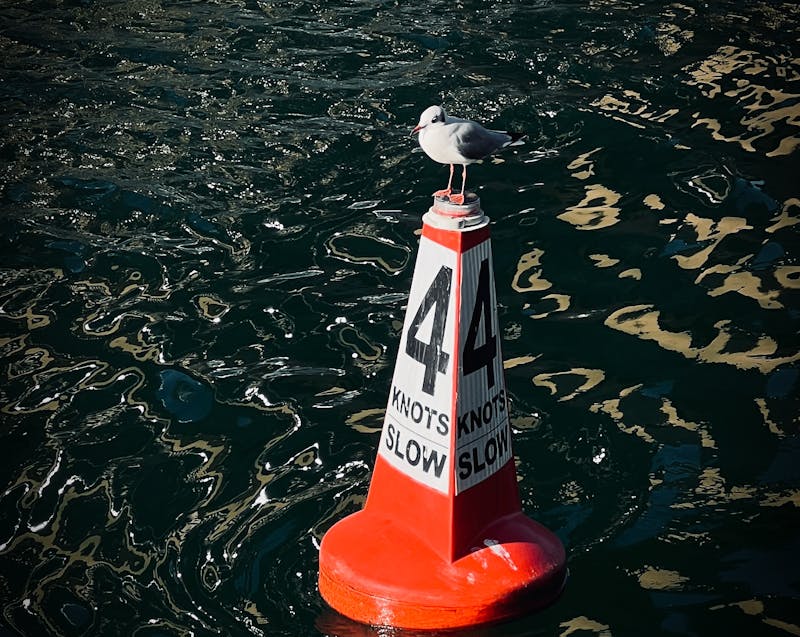
- Boating buoys and markers act as the “traffic signs” of waterways, guiding boaters safely and preventing accidents.
- Colors, shapes, and numbers each carry specific meanings—red and green mark channels, while orange symbols indicate regulations or hazards.
- Special-purpose buoys (like mooring, safe water, and isolated danger buoys) provide critical information beyond basic navigation.
- The IALA buoyage system has two regions (A and B), so rules for red and green buoys differ depending on location.
- Lighted buoys and flashing patterns are vital for safe navigation at night or in poor visibility.
- Beginners should study charts, use learning aids, and practice in calm waters before tackling busy channels.
When you’re out on the water, knowing how to interpret boating buoys and markers is just as important as reading road signs when driving. For beginners and even seasoned enthusiasts, these floating markers are crucial for ensuring safe navigation, preventing accidents, and keeping waterways organized. Without a clear understanding of what different colors, shapes, and symbols mean, boaters risk veering into dangerous waters, colliding with hidden hazards, or disrupting traffic flow.
This guide breaks down the essential meanings of boating buoys and markers in simple terms. Whether you’re learning the basics for your first boating trip or brushing up on navigation rules, this article will provide practical insights and reference points to keep you safe and confident on the water.
Why Are Boating Buoys and Markers Important?
For anyone stepping into boating, the water might seem like a vast, unmarked playground. However, lakes, rivers, and oceans are filled with risks—from shallow sandbars to fast-moving shipping lanes. Boating buoys and markers serve as guides that help reduce those risks. They are part of a standardized system, often overseen by maritime authorities, designed to make waterways as safe and navigable as highways.
These markers are not just for large vessels; recreational boaters, jet skiers, and even kayakers benefit from understanding them. Buoys indicate safe passages, restricted zones, potential hazards, and directions, ensuring everyone shares the water responsibly. Ignoring or misreading them can lead to fines, damaged boats, or serious accidents. That’s why investing time to understand their meanings is non-negotiable for beginners.
The Basics: What Are Boating Buoys and Markers?
At their core, buoys and markers are floating aids to navigation. They can be anchored to the seabed or free-floating, depending on their function. Most are color-coded, numbered, or shaped in ways that convey critical information.
- Buoys are floating devices that can signal hazards, indicate channels, or mark specific zones.
- Markers often appear on posts, poles, or beacons fixed in place, providing similar guidance in shallower or busier areas.
These aids fall under standardized systems, such as the IALA Maritime Buoyage System, which has slightly different rules depending on the region (Region A for Europe, Asia, Africa, and Region B for the Americas, Japan, and the Philippines). Despite these regional differences, the core principles remain consistent and understandable for beginners.
Understanding Buoy Colors and Shapes

When it comes to boating buoys and markers meanings, colors and shapes are the first clues to look for. Each color has a specific function, and shapes reinforce the type of navigation aid.
- Red Buoys (Port Side in Region B)
Indicate the right-hand side of a channel when returning from the sea. In Region B (the Americas), the saying goes: “Red, Right, Returning.” - Green Buoys (Starboard Side in Region B)
Mark the left-hand side of a channel when returning from sea. - Yellow Buoys
Often used to designate special areas such as anchoring zones, caution areas, or boundaries. - White Buoys with Orange Symbols
Typically regulatory markers, indicating restrictions like speed limits, swimming areas, or danger zones. - Shapes
- Nun buoys (cone-shaped, usually red)
- Can buoys (cylindrical, usually green)
- Spherical buoys (round, often for special markers or safe water)
Understanding both color and shape ensures you interpret the signal correctly, especially in crowded waterways.
What Do Different Buoy Numbers Mean?
Numbers are just as important as colors. They indicate a sequence within a navigational channel.
- Odd numbers are usually paired with green buoys.
- Even numbers are paired with red buoys.
- Numbering increases as you move inland from the open sea.
For example, if you’re entering a harbor, you may see green buoys marked with odd numbers on your left and red buoys with even numbers on your right. This numbering system is universal and helps boaters keep track of their location in a channel.
Common Types of Regulatory Buoys and Their Meanings
Not all buoys mark channels—some regulate behavior and warn of hazards. White buoys with orange markings are the most common type of regulatory buoys.
Here’s what they mean:
- Diamond with Cross: Area closed to all boats (e.g., swimming areas).
- Diamond: Warning of hazards such as rocks, shoals, or stumps.
- Circle: Indicates restrictions such as speed limits or no wake zones.
- Square or Rectangle: Provides information, such as directions or permitted activities.
By learning these simple symbols, beginners can quickly identify which areas are safe, restricted, or off-limits.
Special Purpose Buoys You Should Know

Beyond the common navigation aids, there are special-purpose buoys with specific functions. Recognizing these ensures that you’re aware of unique situations on the water.
- Mooring Buoys (White with Blue Stripe): Used for securing vessels instead of anchoring.
- Safe Water Buoys (Red and White Vertical Stripes): Indicate that safe water exists all around the buoy.
- Isolated Danger Buoys (Black with Red Bands): Warn of specific hazards like rocks or wrecks.
- Cardinal Buoys (Yellow and Black): Indicate safe water relative to the buoy, depending on the cardinal direction.
These special markers add an extra layer of safety and are particularly important in larger or unfamiliar bodies of water.
How to Remember Boating Buoys and Markers Meanings
For beginners, remembering every buoy and marker meaning can feel overwhelming. Fortunately, there are simple tricks and mnemonics that make it easier.
- “Red, Right, Returning”: In Region B, keep red buoys on your right when returning to shore.
- Odd Left, Even Right: Odd-numbered buoys are on your left (green), even-numbered on your right (red).
- Orange Symbols Rule: Orange diamonds, circles, and crosses always signal restrictions or warnings.
Visual aids such as laminated charts or apps can also serve as handy references when you’re on the water. Over time, recognizing markers becomes second nature.
Regional Differences in Buoyage Systems
While the basics are consistent, it’s important to note regional differences. The IALA system is split into two regions:
- Region A (Europe, Asia, Africa, Australia, New Zealand): Green buoys mark the right-hand side of a channel when returning from the sea.
- Region B (Americas, Japan, Philippines, South Korea): Red buoys mark the right-hand side when returning from the sea.
If you’re traveling internationally, take note of which region’s system applies to avoid confusion.
Safety Tips for Navigating with Buoys and Markers
Knowing what buoys and markers mean is one thing—using that knowledge safely is another. Here are essential tips:
- Always carry a navigation chart for reference.
- Slow down when approaching unfamiliar buoys.
- Give regulatory buoys and hazard markers plenty of clearance.
- Watch for other boaters who may not know the rules.
- Use GPS and apps as supplemental aids, not replacements.
By combining buoy knowledge with safe boating practices, you greatly reduce risks on the water.
Lighted Buoys and Night Navigation
Daylight boating makes it easy to rely on buoy colors and shapes, but what happens when the sun sets or fog rolls in? That’s when lighted buoys become essential. These buoys use specific light colors and flashing patterns to guide boaters safely at night or in low-visibility conditions.
- Red Lights: Typically mark the starboard (right) side of a channel.
- Green Lights: Indicate the port (left) side of a channel.
- White Lights: Found on safe water buoys or special purpose markers.
- Flashing Patterns: Some buoys flash at regular intervals, while others have quick or group flashes to distinguish their purpose.
Understanding lighted buoy signals prevents confusion after dark and ensures safe passage. Always consult a local navigation chart to match light patterns with buoy meanings in your area.
Tips for Studying Boating Buoys Before Hitting the Water
For beginners, the sheer variety of boating buoys and markers can feel overwhelming. The best approach is to prepare before you even launch your boat. Here are some effective strategies:
- Study Navigation Charts: Familiarize yourself with the waterways you’ll be visiting. Charts often include buoy placement and meanings.
- Use Flashcards or Apps: Digital apps and printable cards are great tools for memorizing buoy symbols.
- Practice on Calm Waters: Start in a small lake or marina where buoys are limited, then gradually move to busier waterways.
- Take a Boating Safety Course: Many courses dedicate a section to navigational aids, complete with quizzes and hands-on practice.
- Review Before Each Trip: A quick refresher before boating helps reinforce knowledge.
Preparation ensures you don’t panic when you encounter unfamiliar markers, making your time on the water safer and more enjoyable.
Frequently Asked Questions About Boating Buoys and Markers Meanings
- What’s the difference between a buoy and a beacon?
A buoy floats in the water, while a beacon is fixed in place, such as on a post or rock. - What does a yellow buoy mean?
Yellow buoys usually mark special areas such as anchoring zones, caution areas, or fishing boundaries. - Can I tie up to any buoy?
No. Only mooring buoys are designed for tying up. Tying to navigational or hazard buoys is unsafe and often illegal. - Why do some buoys flash lights?
Lighted buoys provide nighttime or low-visibility navigation. Different colors and flash patterns indicate the buoy’s purpose. - Do buoy systems differ worldwide?
Yes, but only slightly. Region A and Region B have opposite rules for red and green buoys, so always check your location.
Conclusion: Mastering Boating Buoys for Safer Adventures
Boating offers freedom and adventure, but with that comes responsibility. Understanding boating buoys and markers meanings is the foundation of safe navigation. These aids act as the “traffic signs” of waterways, guiding boaters through channels, warning of hazards, and regulating activity zones.
For beginners, it may seem like a lot to take in, but with practice, the meanings become second nature. By remembering simple rules like “Red, Right, Returning” and recognizing key symbols, you’ll build confidence and navigate waters more safely. Pair this knowledge with responsible boating habits, and you’ll ensure smoother, safer, and more enjoyable trips for yourself and others.

